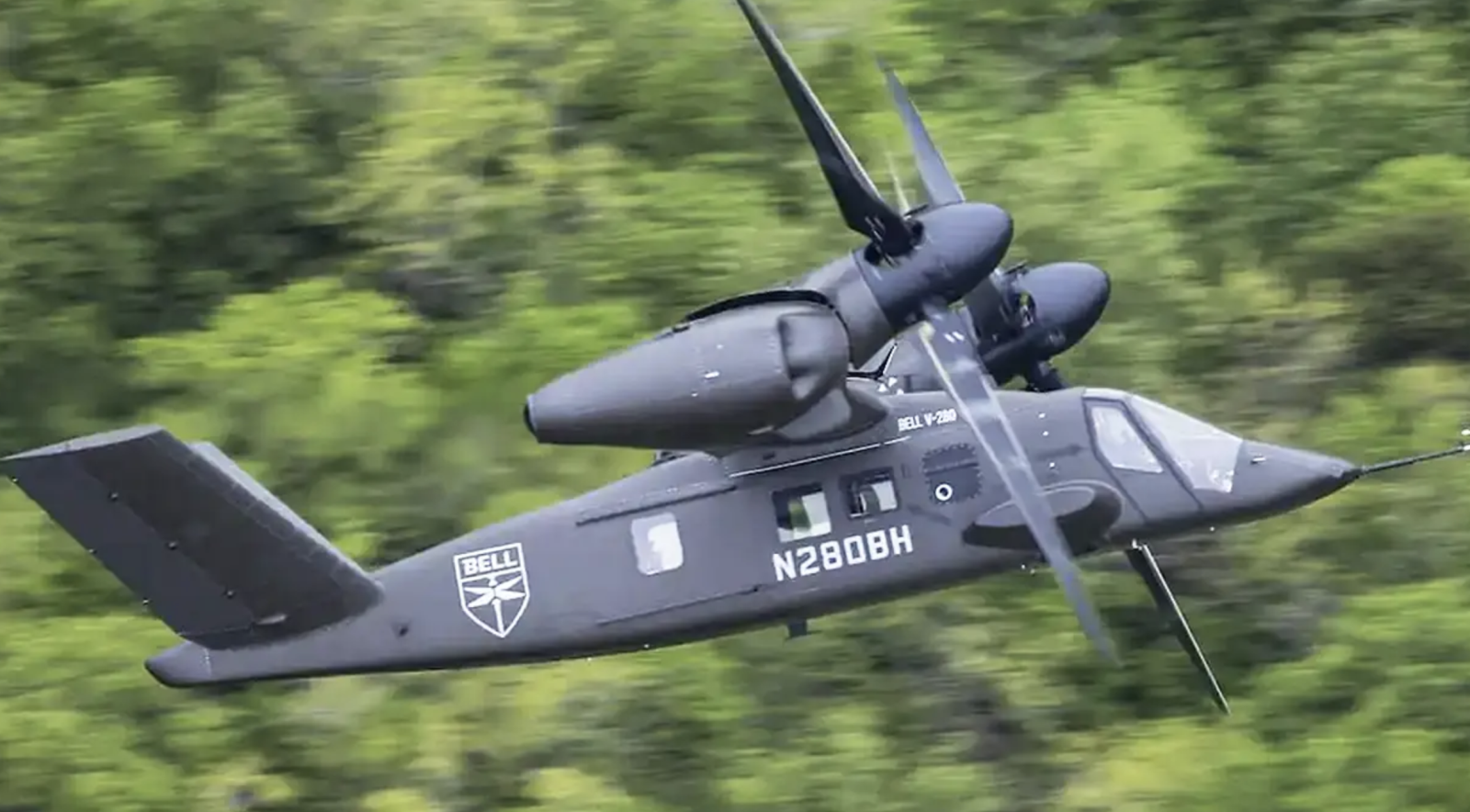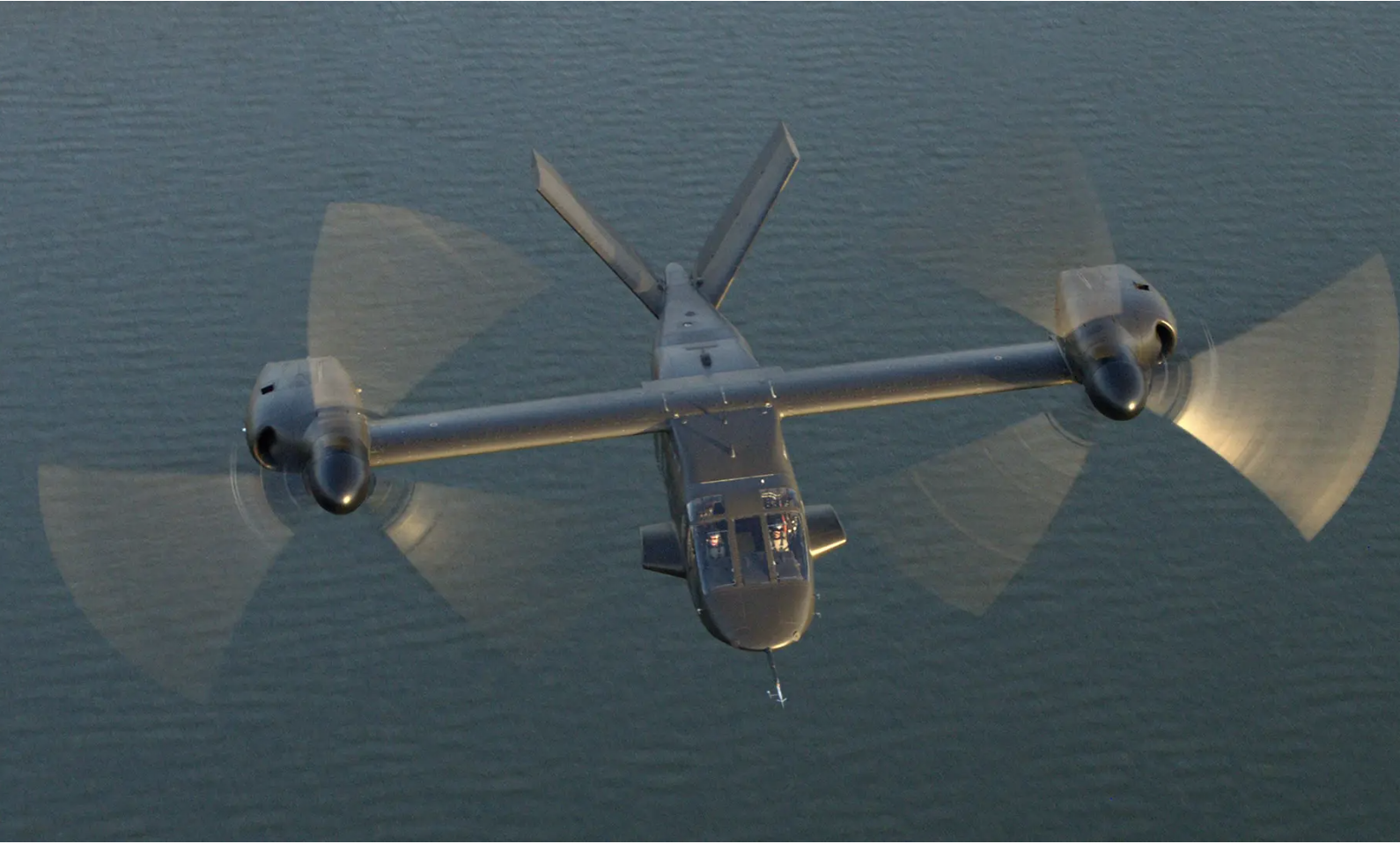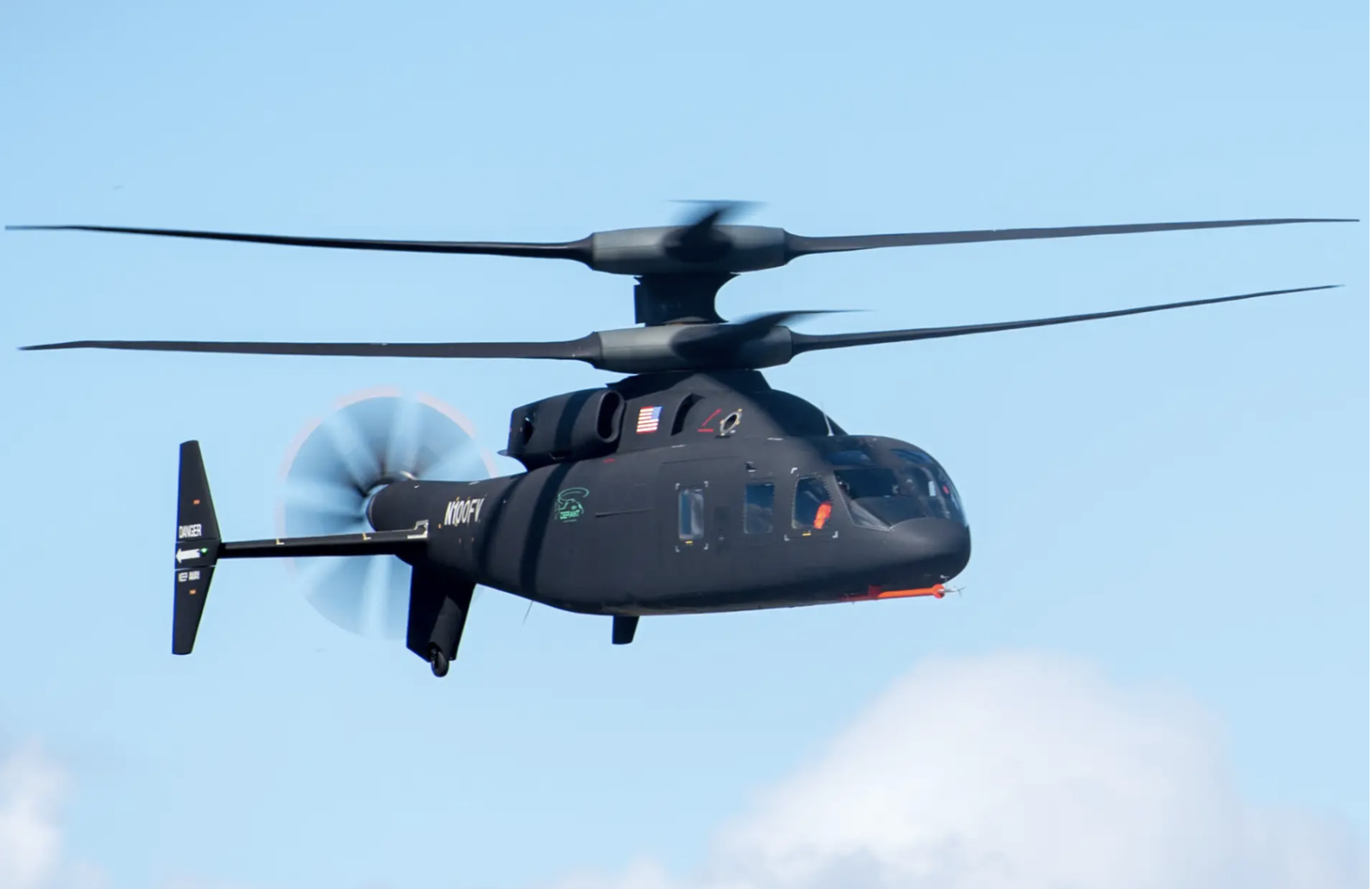V-280 Biplane Super-Helicopter Secures Billion-Dollar US Military Contract Bid
Bell Wins Contract to Build Future Long Range Attack Aircraft for U.S. Military
Aviation manufacturer Bell has secured a significant contract with the U.S. military to manufacture the Future Long Range Attack Aircraft (FLRAA), marking the military’s most substantial helicopter procurement decision in four decades.
Bell’s V-280 Valor tiltrotor helicopter has outperformed competitors such as Sikorsky and Boeing’s Defiant X, earning the role of replacing the aging UH-60 Black Hawk helicopter fleet within the U.S. Army.
The contract for the development of this next-generation helicopter is valued at up to $1.3 billion and is intended to replace around 2,000 Black Hawk helicopters. The FLRAA will not be a one-to-one replacement but will assume the role of the Black Hawk, which has traditionally transported troops to and from battlefields, with a target deployment date around 2030.
In addition to replacing Black Hawk helicopters, this contract will also replace approximately 1,200 Apache attack helicopters and other aircraft, utilizing FLRAA, Future Attack Reconnaissance Aircraft (FARA), and Air Launch Effect drones (ALE).
The U.S. military’s specifications for the FLRAA include a range of approximately 2,440 nautical miles (4,500 kilometers) without refueling while maintaining the agility necessary to transport troops into high-threat areas.
The development and manufacturing phases, along with initial low-rate production, are estimated to cost around $7 billion. Over the entire lifespan of the FLRAA program, if fully realized, it could be worth approximately $70 billion, according to Major General Rob Barrie, the U.S. military’s aviation program executive.
The V-280 Valor represents a hybrid design, combining helicopter and fixed-wing aircraft capabilities. Its engines’ propellers can tilt for take-off, landing, and forward flight, allowing it to blend the speed of fixed-wing aircraft with the agility of helicopters.
The V-280 Valor, developed in collaboration with Bell Helicopter, Lockheed Martin, General Electric (GE), and other partners, boasts a compact size and versatility. It utilizes tilt engine technology, requiring minimal space for take-off and landing.
A notable feature of the V-280 is its ability to switch between helicopter and fixed-wing modes through an electronic-mechanical control system, retractable landing gear, and wide side doors for troop deployment and ground targeting. With a V-shaped tail for stability, the V-280 can reach speeds of up to 555 km/h (344 mph).
Additionally, the V-280 can refuel mid-air and operate in challenging terrains. Its spacious cabin, 25% larger than the UH-60 helicopter, makes it suitable for medical evacuations and even towing a M777 howitzer while flying at 280 km/h.
The use of composite materials and carbon cores in its construction has reduced the aircraft’s weight by 30% while maintaining a bulletproof cabin. The V-280 is not only faster to build than the V-22 but also costs as much as the UH-60 Black Hawk.
The V-280 comes in two variants, one for transport and one for attack. Its basic specifications include a length of 15.4 meters, a width of 24.93 meters, a height of 7 meters, an empty weight of 15,000 kg, a maximum take-off weight of 26,000 kg, two T64 turbofan engines, an 11-meter diameter propeller, a cruise speed of 519 km/h, a combat range of 900-1,400 km, a flight ceiling of 1,800 meters, an operating range of 3,900 km, a crew of four, and the ability to carry 14 soldiers or 5.4 tons of cargo.
The attack version of the V-280 is equipped with cannons, missiles, and guided weapons, capable of supporting ground troops and deploying aerial vehicles without interference from the propeller system during flight.
To enhance situational awareness, the V-280 utilizes advanced sensor technology from the F-35 stealth fighter program known as the Aperture Distribution System (DAS). This system features six high-resolution infrared cameras mounted on the fuselage, providing real-time 360-degree views. The DAS sensor data can be displayed on integrated helmets or cockpit displays, greatly enhancing combat performance.
The Bell V-280 Valor contract is one of the most anticipated military contracts in 2022, with the Pentagon carefully evaluating and considering the major procurement programs. Major General Rob Barrie emphasized the significance of this acquisition and the importance of ensuring it is executed correctly and with discipline.
In response to winning the contract, Scott Donnelly, CEO of Textron, stated their commitment to building a transformative weapons system that meets the military’s mission requirements.
In addition to the FLRAA, the U.S. military plans to introduce the Future Attack Reconnaissance Aircraft (FARA) around the same time to perform reconnaissance missions. The FARA mission had been vacant since the retirement of the Kiowa Warrior helicopters in 2013, and the military sought to fill the gap with Apache helicopters and Shadow drones.
Bell and Lockheed Martin are competing for the contract to manufacture FARA, and both aircraft are expected to enter service by 2030, offering significant advancements in the U.S. military’s rotorcraft capabilities.
Hits: 24










